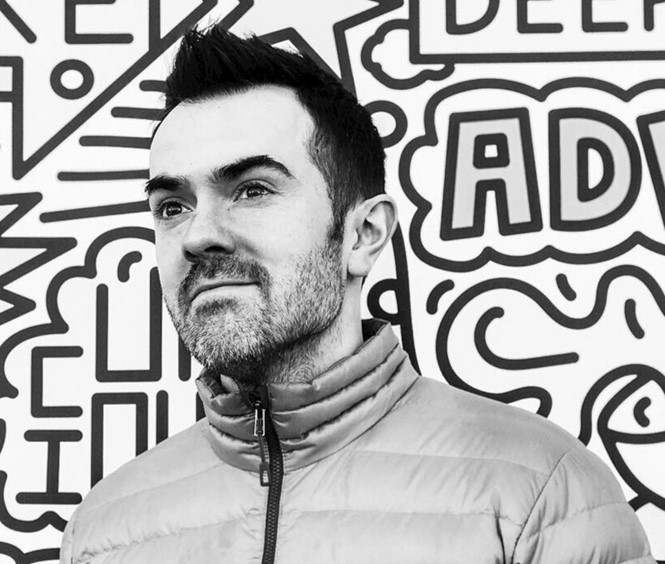Navigating the internet of (too many) things: contending with digital fatigue

Why are consumers really turned off by your content - and how can you turn them back around? Michael Bartley, executive creative director at Indigo Slate, a Zensar company, explores how putting human authenticity and personality at the heart of your digital efforts can help cut through the immunity customers have built against digital-first content experiences.
In 1985, just shy of the turn of the century—and several decades before the internet, as we know it, came to be—Neil Postman took a guess at what the future might hold. The result was a book called, morbidly enough, Amusing Ourselves to Death, the crux of which was something Postman described as the “information-action ratio”, a kind of input-induced paralysis where we’re handed too much information to know what to do with it.
Whether it was prophecy or providence, it’s time to admit Postman was right. Today’s consumers are increasingly turned off by the overwhelming amount of digital content they encounter daily. This phenomenon, frequently called digital fatigue, not only poses a challenge for brands striving to engage their target audiences, but produces a tangible negative impact on bottom lines.
Some believe that this fatigue – or shift in consumer mindset – stems from the pandemic when brands emphasised immediate conversions. The findings in Deloitte’s recent Digital Consumer Trends survey back this up, showing a significant deceleration of smart device adoption and remorse among users regarding time spent on devices. While we’ve begun to put pandemic-era approaches to digital marketing behind us, we may have inadvertently neglected the importance of long-term thinking in the process, leading to budget cuts primarily affecting brand awareness initiatives and a heightened emphasis on short-term sales activation, especially prevalent in the B2B sector.
Les Binet and Peter Field’s latest research, Effectiveness in Context - in which they dub short-term activation campaigns and sales programmes ‘short-termism’ - demonstrates that, although often highly profitable and efficient in the short-term, over a longer period of time, this tactic rapidly deteriorates the overall impact of marketing, limiting brands’ ability to capture consumers’ imaginations and maintain their attention.
There are pros and cons to each mindset, and, as with most strategies, it’s all about striking the appropriate balance between them. However, prioritising short-termism—especially when it’s coupled with extreme content overload, as it so often is today— could push consumers to tune out the noise, inoculate themselves against overstimulation, and actively avoid engaging with digital media. This means that, despite brands’ investments in their digital-first advertising and content efforts, it may fall on deaf ears.
Overcoming digital fatigue
Whether digital fatigue is a symptom of consumer disengagement, a consequence of poorly designed digital experiences, or a combination of the two, treating it begins with a shift in mindset. Only then can we hope to open up new opportunities for brands to connect with their audiences effectively.
The first step is for brands to acknowledge their responsibility in creating engaging digital experiences, rather than considering digital fatigue an inevitable consequence of existing on the internet. Once acknowledged, brands can consider adopting strategies to combat the immunity consumers have built against disengaged digital experiences:
- Make yourself impossible to ignore. You can start by focusing on innovative concepts rather than relying solely on platforms. A good creative partner is essential here, they’re versed in what everyone else is doing and will help you push boundaries and think critically about what ‘attention’ means. Too many brands assume consumers aren’t discerning enough, and as long as it’s digital it’s good enough—nothing could be further from the truth. The quickest path to mediocrity is to do what everyone else is doing. Turn your strategy on its head, look at things from different perspectives, think about new ways your customer can experience your content; can your digital channel be a film, your CRM process a play, or your outreach campaign an event?
Look at Liquid Death, the premium American water brand that does anything but play by the rules. With their independent spirit, heavy metal aesthetic and edgy brand storytelling, they’ve served up a refreshing change to an aisle saturated by indistinguishable brands. It serves as a compelling case study in how a disruptive, unconventional approach that challenges industry norms can create a strong brand identity that resonates with its target audience and achieves remarkable success in the marketplace.
- Add value. It sounds simple, but delivering value and rewarding consumers for their attention is the best way to maintain engagement. The reward can be in the creative itself, an offer at the end for those that make it through, or even an emotion that they’re left with. A customer or potential customer should never feel like they’ve wasted their time or be left wondering ‘what was that all about?’. Instead, say what you see, until you see what you say: be visionary, take a stance on something pertinent, focus on changes in the industry, the value to the individual or business, and why your story is culturally relevant. Consider who your brand is for, who it could be for, and why they should listen to you—then commit to delivering what they want. Celebrate them. Create spaces for them. Make the content that matters to them, not you. Do it right and they will flock to you.
Sony does this exceptionally well, using experience, community and education to build its brand with a fervently devoted fanbase. Take the Sony World Photography Awards; designed to elevate the careers of photographers to the next level, the Awards champion inclusivity and access by being free to enter and spotlighting photographers’ storytelling. This kind of campaign ticks all the boxes in terms of metrics, but has nothing to do with product or sales; it's all about Sony’s target audience. Only focusing on paid performance and not understanding the larger cultural impact a brand has can actually backfire on you over the long term. But value is what breeds loyalty.
- Don’t settle for vanilla. Brands must break free from generic content and focus on differentiation, while also being human-centric and authentic in their messaging. Think hard about what’s in the market, and what makes your product different. If nothing inherently makes it different, what about a new approach or a new use case? If all you do is follow the trends, you will stay with the pack.
However, vanilla is not to be completely overlooked, it’s important to consider your industry. Some things are technical and niche for a reason – it’s about knowing your buyer and their limits, but also pushing those to find new niches. When marketing to your consumer, obsess over what they’re being bombarded with on a daily basis, and focus on fresh ways to break through. Make it easy to answer ‘so what?’, and dig deep to find the ‘oh, wow’ moment, as opposed to killing them with generic USPs, jargon, tired templates, or placeholder creative that feels like stock or filler.
- Think holistically about your brand or fail. Consumer expectations have risen. For any digital experience to succeed, you have to integrate marketing efforts across different channels and touchpoints to create a cohesive and immersive brand experience. It requires you to move away from siloed thinking and consider design, engineering, and engagement as a unified process to deliver personalised and memorable campaigns that resonate with consumers on both emotional and functional levels.
One brand setting the tone here is Nike. Its marketing strategy encompasses various elements, including brand storytelling, product innovation, athlete endorsements, social media engagement and experiential marketing. They focus not only on promoting their products, but also on inspiring and empowering their target audience through compelling narratives and authentic connections. This has allowed them to try and take their business in more of a D2C direction by tightly integrating various elements of their brand and digital experiences.
- Be human in an age of AI. With the advent of generative AI, we’ve entered a brave new world and the significance of genuine human connection, live streaming and authenticity has never been more palpable. To truly provide value, it is essential to avoid excessive self-promotion and pricing discussions, and instead focus on understanding the core essence of the campaign. Evoke emotions rather than explicitly showcasing the product. Embrace the storytelling techniques of film, capturing attention through beauty and taking calculated risks. Prioritise the consumer and address their problems directly. Approach your brand like an engaging guest at a dinner party—be lively, concise and memorable. Embrace your humanity without hesitation, laugh, celebrate and offer compliments. If you don't have a genuine passion for what you're creating, and if it's not effortlessly enjoyable for consumers, it is unlikely to resonate with anyone else.
Harness your consumer’s response to further develop your brand
As you begin to incorporate these strategies, it’s important to evaluate how consumers respond to digital advertising and content experiences. By understanding the impact on customer acquisition, conversion and retention, brands can identify what works well and what doesn't. That means thinking about acquisition with all of the brilliance and emotion of brand building. And, while ‘short-termism’ has its obvious appeals, investing in brand awareness campaigns, even if they don't directly impact sales, has long-term benefits and even better supports the power of activation.
By focusing on building communities, industry recognition and celebrating like-minded individuals, brands can establish a strong foundation of loyalty and engagement. Personalisation, authenticity and creativity all play key roles in recapturing consumers' attention and establishing deeper connections across all marketing activities.
Digital fatigue is a challenge that appears set to stay - but by adopting a broader perspective and considering the value of brand image and awareness, it can be overcome. If you’re able to understand consumer responses, embrace holistic design processes and avoid generic content, your brand can create meaningful digital experiences that cut through the noise and engage your target audiences effectively.
Find the soul of your business and create a spark.












